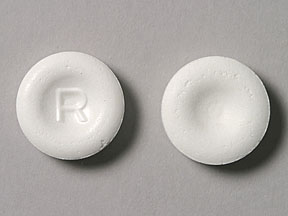Rolaids Regular Strength Interactions
There are 435 drugs known to interact with Rolaids Regular Strength (calcium carbonate/magnesium hydroxide), along with 8 disease interactions, and 1 alcohol/food interaction. Of the total drug interactions, 13 are major, 364 are moderate, and 58 are minor.
- View all 435 medications that may interact with Rolaids Regular Strength
- View Rolaids Regular Strength alcohol/food interactions (1)
- View Rolaids Regular Strength disease interactions (8)
Most frequently checked interactions
View interaction reports for Rolaids Regular Strength (calcium carbonate / magnesium hydroxide) and the medicines listed below.
- albuterol
- Aleve (naproxen)
- amlodipine
- amoxicillin
- aspirin
- atorvastatin
- Benadryl (diphenhydramine)
- Claritin (loratadine)
- famotidine
- Fish Oil (omega-3 polyunsaturated fatty acids)
- gabapentin
- ibuprofen
- levothyroxine
- losartan
- melatonin
- metformin
- MiraLAX (polyethylene glycol 3350)
- Mucinex (guaifenesin)
- naproxen
- omeprazole
- pantoprazole
- Pepto-Bismol (bismuth subsalicylate)
- prednisone
- ranitidine
- simethicone
- Tylenol (acetaminophen)
- Vitamin B12 (cyanocobalamin)
- Vitamin C (ascorbic acid)
- Vitamin D3 (cholecalciferol)
- Zyrtec (cetirizine)
Rolaids Regular Strength alcohol/food interactions
There is 1 alcohol/food interaction with Rolaids Regular Strength (calcium carbonate / magnesium hydroxide).
Rolaids Regular Strength disease interactions
There are 8 disease interactions with Rolaids Regular Strength (calcium carbonate / magnesium hydroxide) which include:
- phosphate calcifications
- cardiac contraction/conduction
- malabsorption
- renal dysfunction
- sarcoidosis
- inflammatory bowel disease
- intestinal obstruction disorders
- renal dysfunction
More about Rolaids Regular Strength (calcium carbonate / magnesium hydroxide)
- Rolaids Regular Strength consumer information
- Compare alternatives
- Drug images
- Side effects
- Dosage information
- During pregnancy
- Drug class: antacids
- En español
Related treatment guides
Drug Interaction Classification
| Highly clinically significant. Avoid combinations; the risk of the interaction outweighs the benefit. | |
| Moderately clinically significant. Usually avoid combinations; use it only under special circumstances. | |
| Minimally clinically significant. Minimize risk; assess risk and consider an alternative drug, take steps to circumvent the interaction risk and/or institute a monitoring plan. | |
| No interaction information available. |
See also:
Further information
Always consult your healthcare provider to ensure the information displayed on this page applies to your personal circumstances.


